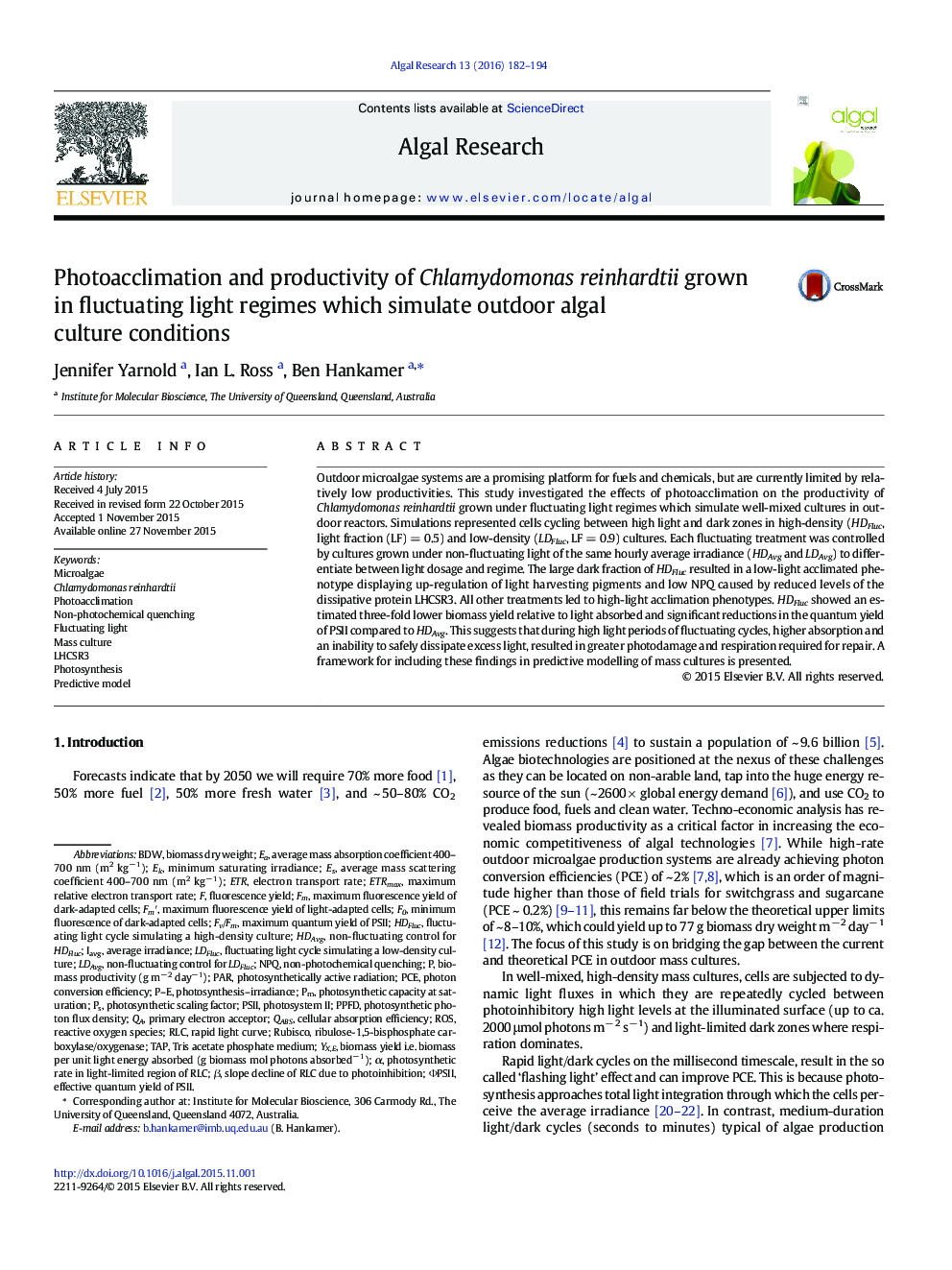| Article ID | Journal | Published Year | Pages | File Type |
|---|---|---|---|---|
| 8087477 | Algal Research | 2016 | 13 Pages |
Abstract
Outdoor microalgae systems are a promising platform for fuels and chemicals, but are currently limited by relatively low productivities. This study investigated the effects of photoacclimation on the productivity of Chlamydomonas reinhardtii grown under fluctuating light regimes which simulate well-mixed cultures in outdoor reactors. Simulations represented cells cycling between high light and dark zones in high-density (HDFluc, light fraction (LF)Â =Â 0.5) and low-density (LDFluc, LFÂ =Â 0.9) cultures. Each fluctuating treatment was controlled by cultures grown under non-fluctuating light of the same hourly average irradiance (HDAvg and LDAvg) to differentiate between light dosage and regime. The large dark fraction of HDFluc resulted in a low-light acclimated phenotype displaying up-regulation of light harvesting pigments and low NPQ caused by reduced levels of the dissipative protein LHCSR3. All other treatments led to high-light acclimation phenotypes. HDFluc showed an estimated three-fold lower biomass yield relative to light absorbed and significant reductions in the quantum yield of PSII compared to HDAvg. This suggests that during high light periods of fluctuating cycles, higher absorption and an inability to safely dissipate excess light, resulted in greater photodamage and respiration required for repair. A framework for including these findings in predictive modelling of mass cultures is presented.
Keywords
effective quantum yield of PSIIETRmaximum quantum yield of PSIIPPFDΦPSIIPSIIChlamydomonas reinhardtiiPhotoacclimationRuBisCORLCPCEBDWETRmaxNPQBiomass dry weightFm′Fv/Fmribulose-1,5-bisphosphate carboxylase/oxygenaseROSPhotosynthetically active radiationTris acetate phosphate mediumParNon-photochemical quenchingMicroalgaeTAPFluorescence yieldPhotosynthesisphotosynthetic photon flux densityPhotosystem IIMass culturePredictive modelrapid light curveElectron transport rateFluctuating lightReactive oxygen speciesprimary electron acceptor
Related Topics
Physical Sciences and Engineering
Energy
Renewable Energy, Sustainability and the Environment
Authors
Jennifer Yarnold, Ian L. Ross, Ben Hankamer,
